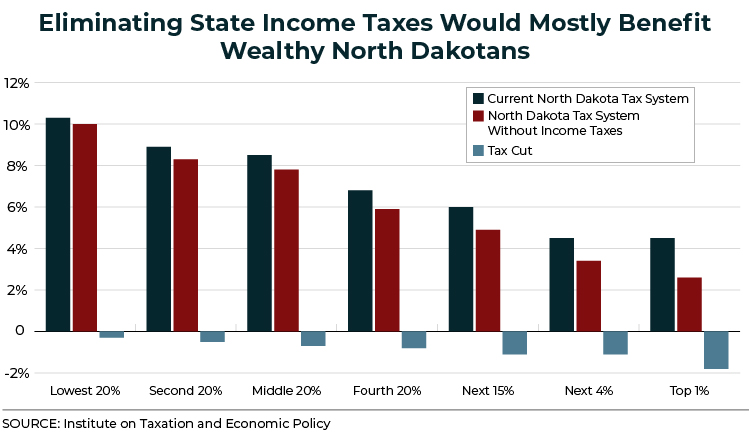
North Dakota
2024 State Tax Ballot Questions: Voters to Weigh in on Tax Changes Big and Small
October 17, 2024 • By Jon Whiten

As we approach November’s election, voters in several states will be weighing in on tax policy changes. The outcomes will impact the equity of state and local tax systems and the adequacy of the revenue those systems are able to raise to fund public services.
North Dakota Senate Should Put the Freeze on House Tax-Cut Plan
March 11, 2019 • By Dylan Grundman O'Neill

Lawmakers in Bismarck were treated last weekend to the largest single day of snowfall the city has ever seen. As state senators begin weighing a bill recently passed by the House that would replace the state's income taxes with oil revenue, they might want to reflect on how similar oil revenue is to the snow: although both are in extreme abundance right now, both are volatile and unpredictable and will melt away sooner than later. Lawmakers should also consider how eliminating the state's income taxes might warm the hearts of wealthier North Dakotans but would leave most North Dakota families…
Center on Budget and Policy Priorities: North Dakota’s Measure 2 is Imbalanced and Would Harm Efforts to Secure State’s Economic Future
January 15, 2013
North Dakota’s proposed Measure 2, a major change to the state’s income tax that will appear on the November ballot, would be detrimental to the state for three principal reasons: 1. Measure 2 is risky and short-sighted. 2. Measure 2 is imbalanced and would prevent broadbased tax changes that could benefit all North Dakota families. […]
North Dakota Economic Policy Project: Proposed Rate Cuts Would Make North Dakota Tax System More Unfair
January 14, 2013
“North Dakota Legislators are proposing nearly a half billion dollars in tax cuts, reductions and exemptions this session. Some of those tax breaks may be warranted, but they should be targeted primarily to North Dakotans working to sustain or achieve a middle class life.”
North Dakota Economic Policy Project: Revised Analysis of 2011 Individual Income Tax Reductions
January 14, 2013
“North Dakota Legislators passed nearly a half billion dollars in tax cuts, reductions and exemptions this session. Some of those tax breaks may have been warranted, but they should have been targeted primarily to North Dakotans working to sustain or achieve a middle class life. One tax cut passed by the 2011 Legislature reduced the […]
